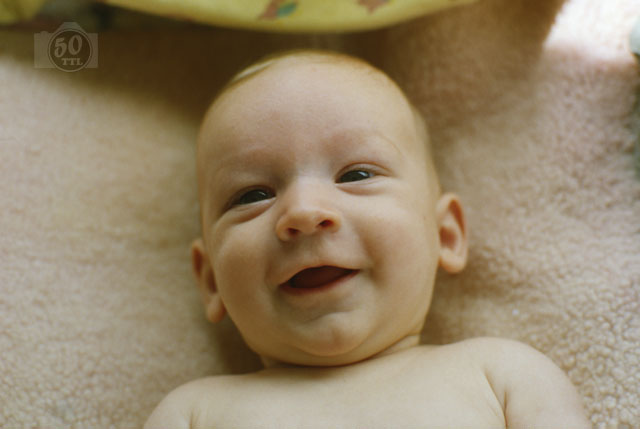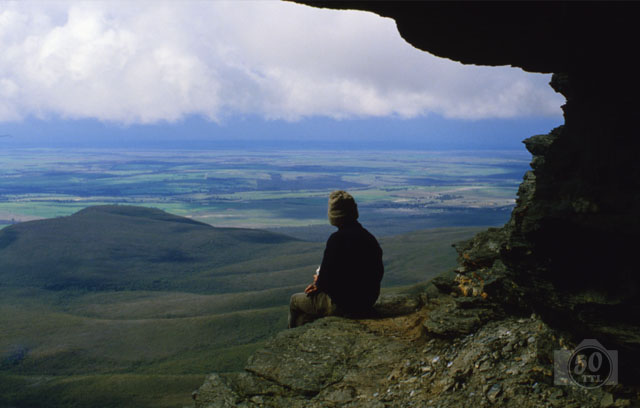
Our son Tim, our second child, was born in 1986. It was a privilege and a joy to experience the growth of our family. Among the many other positives, I got to try my hand at baby photography for a second time around. It’s not easy. In the first few weeks and months of a baby’s life, photographing them is a matter of patience, luck and timing. Babies pretty quickly sort out how to respond to faces with a smile, but it is often fleeting and quick to disappear.
Babies don’t know what a camera is. It might be a curious shape in front of them, but it doesn’t meet their innate need to connect with human eyes. I found that I could frame Tim’s face in the viewfinder, and then hold the camera steady and move my head to make eye contact. In effect, I was playing peek-a-boo from behind the camera. That would usually raise a smile and, if my hands were steady, I could take a photo without even looking back through the viewfinder.
Interestingly, this smiling baby grew up to become an accomplished photographer, and now takes better pics than mine.

And then there’s the problem of photographing children together. You might have the patience and luck to capture a random new baby smile, but you won’t have the luxury of waiting when a sibling is involved. It doesn’t matter, of course. Photos like this are largely just matters of family record.
At this time of life, I was blissfully unaware of the baby photography industry. I am sure it existed back then in some form, but it is huge now and it supports a vast array of suppliers of baby headbands, baby jewellery and cute props. My photos are just suburban family snaps.

But still the bush drew me back. This photo was taken from a cave in the Stirling Range. Like many photos of the natural world, it reflects the fact that hard work has its rewards. In this case, a friend and I climbed up to one of the Three Arrows, to check a water collection point that rock climbers had put in place some years before.
When I look at this photo, I am conscious that I would frame it differently today. The person is too close to the centre. Today I would move to my right a little, if possible, to close the gap between the person and the cave wall. Then I could squeeze the figure and the wall to the right and open out more of the view into the left-hand side of the frame. Back in the film years, I think many of my photos suffered from overuse of centred framing. Live and learn.